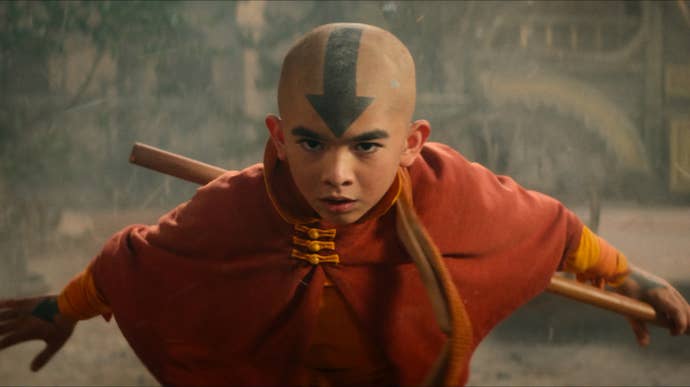Netflix's Avatar is a failure because it doesn't understand why animation even works
There's just a lot that animation can do that live-action can't.
I definitely think it would be a little bit silly, and certainly an over-exaggeration, to say that the original animated Avatar: The Last Airbender is a perfect show. It's an incredible show, with an approach to colonialism that feels surprisingly solid both because it's a kids show (and an American kids show made in the 2000s, to boot). Not to mention a stellar cast of characters, a fun and well-developed concept, and a narrative drive that keeps you coming back for more.
Most importantly, though, it was an animated series that really leaned into the strengths of its medium - and I just don't think Netflix's live action adaptation really understands why animation works at all.
For a good few years now, it's become a bit of an industry trend to adapt classic series or films that were originally animated, and turn them into live action. We've seen Disney do it plenty of times, and more recently the world of anime has followed suit with shows like One Piece (a fellow Netflix live action adaptation) also getting the treatment. But across the board, these news takes on beloved stories just never quite get what's so appealing about the original. And it's because they're animated.
It's frustrating, primarily because it comes across as Hollywood executives thinking people only care about the story, and that the visuals can be secondary (because let's be real, neither the live action One Piece or Avatar look all that good, or interesting). Yes, everyone loves Avatar because of the narrative that evolves over the course of three seasons, but they also love it because of how expressive it is. Take Airbending, for example.
How do you present something as invisible as air? It's a difficult thing to do, if you're shooting live-action. Sure, you could maybe do something like dust, sand, tiny flecks of this and that, but sometimes you might literally just want air. In animation, it's easy! You can simply draw it as white strands, almost like ribbons of cloud. Who cares if it's realistic; your sense of disbelief has already been suspended because it's animated. In Netflix's Avatar, though, it never really works. You can't see air in real life, and throughout all eight episodes, it rarely looks all that natural unless there are dirt clouds or similar.
What makes it worse is that with airbending, and all of the other types too, the physical movements of the actors never land that well either. You can tell they're not really moving anything, there's no weight to their movements, which is always an issue with needing to use CGI - that's still something that can go wrong in 2D animation, but it's less likely to.

But outside of the bending itself, one of my biggest issues with Netflix's Avatar is the acting. For the most part, the cast is fine – never all that bad, really – and I even think Dallas Liu as Prince Zuko and Paul Sun-Hyung Lee as Uncle Iroh actually work really well, particularly as a pair.
The problem unfortunately comes from the main three, Aang, Katara, and Sokka. Again, I want to stress that they're not awful, but they're also human, and actual humans can only be so expressive. Animated humans, on the other hand, can push their faces past what is real, which the original Avatar often does, something that adds to the show's comedy moments.
It makes the main cast feel so much less charming in the new version, which is a shame because that's a big part of why people love the original. These characters were made to be animated, in two literal senses of being drawn frame by frame, and moving in a way that's larger than life.
Netflix's Avatar, then, feels like a failure because it does practically nothing better than the original, actively making some elements worse, and others just flat out uninteresting. Ultimately the show is doing really well, with a stronger debut than the incredibly successful One Piece, so I can only imagine we'll get a second season.
But personally, I won't be tuning in if it does – why bother when the original still exists, and is on Netflix too? Though I hope that the team behind it does take a second to really look at what made the classic series work, and figure out a way to do something of its own.

.jpg?width=70&height=70&fit=crop&quality=60&format=png&auto=webp)








